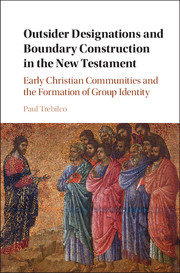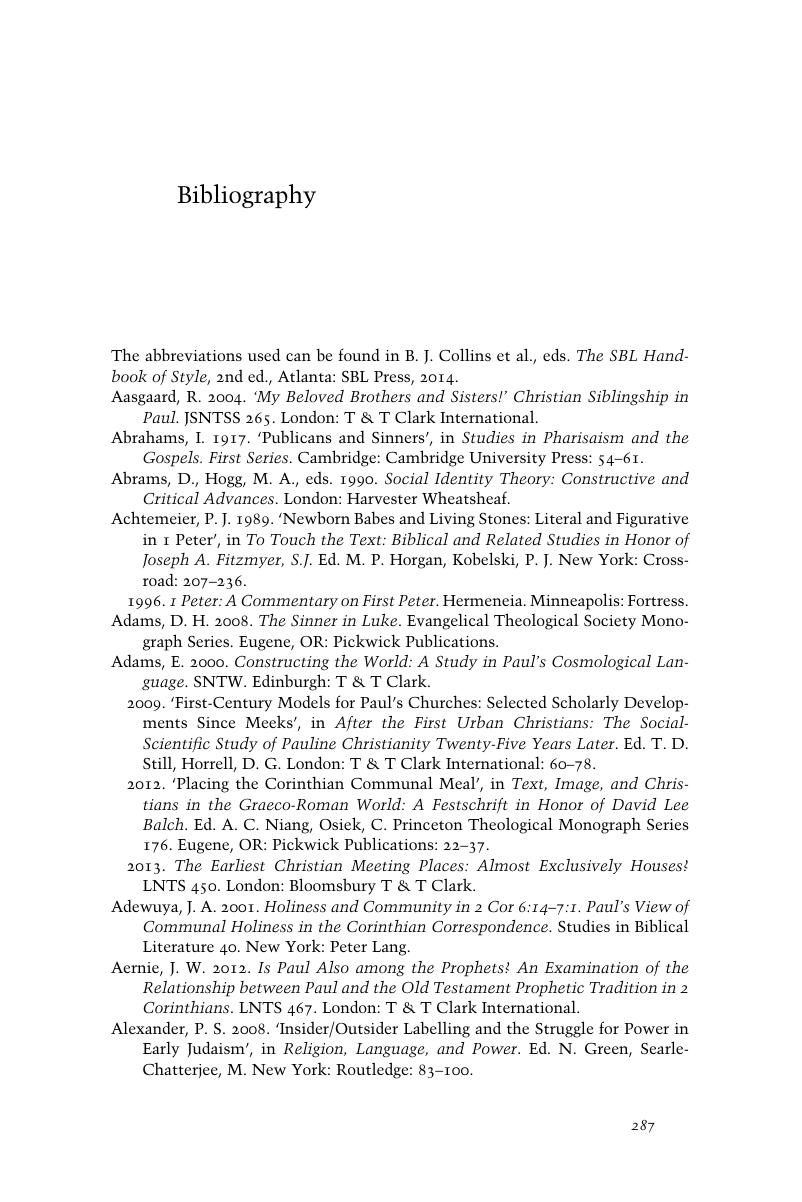 Outsider Designations and Boundary Construction in the New Testament
Outsider Designations and Boundary Construction in the New Testament Book contents
- Outsider Designations and Boundary Construction in the New Testament
- Outsider Designations and Boundary Construction in the New Testament
- Copyright page
- Dedication
- Contents
- Preface
- 1 Introduction
- 2 Methodology: Insights and Perspectives from Other Areas of Study
- 3 The Broad Concept of ‘the Outsiders’ and Its Lexicalisation Using a Range of Different Terms
- 4 Unbelievers: οἱ ἄπιστοι and Other Terms
- 5 ‘The Outsiders’: οἱ ἔξω, οἱ ἔξωθεν and ἰδιῶται
- 6 The Sinners: οἱ ἁμαρτωλοί
- 7 The Gentiles: τὰ ἔθνη
- 8 The Jews: οἱ Ἰουδαῖοι
- 9 The Functions of Outsider Designations in 1 Corinthians, Romans and 1 Thessalonians
- 10 The Functions of Outsider Designations in the Pastoral Epistles and 1 Peter
- 11 Conclusions
- Bibliography
- Author Index
- Subject Index
- Index of Texts
- References
Bibliography
Published online by Cambridge University Press: 11 October 2017
- Outsider Designations and Boundary Construction in the New Testament
- Outsider Designations and Boundary Construction in the New Testament
- Copyright page
- Dedication
- Contents
- Preface
- 1 Introduction
- 2 Methodology: Insights and Perspectives from Other Areas of Study
- 3 The Broad Concept of ‘the Outsiders’ and Its Lexicalisation Using a Range of Different Terms
- 4 Unbelievers: οἱ ἄπιστοι and Other Terms
- 5 ‘The Outsiders’: οἱ ἔξω, οἱ ἔξωθεν and ἰδιῶται
- 6 The Sinners: οἱ ἁμαρτωλοί
- 7 The Gentiles: τὰ ἔθνη
- 8 The Jews: οἱ Ἰουδαῖοι
- 9 The Functions of Outsider Designations in 1 Corinthians, Romans and 1 Thessalonians
- 10 The Functions of Outsider Designations in the Pastoral Epistles and 1 Peter
- 11 Conclusions
- Bibliography
- Author Index
- Subject Index
- Index of Texts
- References
Summary

- Type
- Chapter
- Information
- Outsider Designations and Boundary Construction in the New TestamentEarly Christian Communities and the Formation of Group Identity, pp. 281 - 286Publisher: Cambridge University PressPrint publication year: 2017


